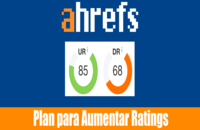Fifteen years after this first map, Piri Reis drew a second one, again at Gelibolu. Like the previous one it bears his signature. Unfortunately to-day we have only a small portion of it i.e. a small portion of the western hemisphere. It is 68/69 centimeters in size. Ornamental figures are drawn in the margins and most of it is in colour.
There we find the northern part of the Atlantic Ocean and the newly discovered regions of North and Central America. There are four wind-roses on it. The tropic of Cancer is shown here, though it was not on the first map. There are also scales of mules on it, each with twenty divisions.
From the notes beside them we gather that the distance between the divisions stand for 50 miles, and that between two dots for 10 miles. The scales here are bigger than in the previous one. We see Greenland in the north and the Azores towards the south. Some of the latter bear the names “San Mikal”, “Santa Mariya”, “Euriko”, and “San Jorjo”. To the south of Greenland two large pieces of land are shown; the one in the north is called Baccalao.
On the map there is a note saying that Baccalao was discovered by the Portuguese. In another note further down near “Terra Nova” he says that though these coasts were discovered by the Portuguese ,all is not known as yet, and only the parts that have been discovered are shown on the map. Further south still one can see the Peninsula of Florida drawn very much as we know it today. He calls it San Juan Batisto. The name was first given to Porto Rico on the previous map.
The pieces of land seen at the side are the peninsulas of Honduras and Yucatan, discovered in 1517 and 1519 respectively. Unlike the first map, drawn under the influence of Columbus, the islands of Cuba, Haiti, the Bahamas and the Antilles are drawn quite accurately. One can read the words “Is! di Vana” over Cuba. Although there are numerous names along the coast of Venezuela, very few can be read. Among the legible words are San Cilormi, Monte Krago, Detonos, Die Sagram, Ponte Sogon, Didas and Sare.
In this second map the drawing of the coastlines shows greater improvement in technique and also close resemblance to the modern conception of these areas. The stony and rocky sections are given special care. There is, however, a slight distortion in the map from the true position of the continent as we know it today-
This error was committed, due to neglect in not taking into consideration the ten to thirteen degrees of difference in angle on the contemporary compass. This error is to be observed in all the contemporary maps without any exception.
On this map, as on the previous one, there are some explanatory notes, but they are recorded more briefly. The note on the left-hand corner of the map, under the scales with the long and ornamental points, gives the signature of the author as well as the date 1528 (A. H. 935). Beside the measurements there is a note indicating the mileage, where he says that the distance between two sections is 50 miles and between two dots 10 miles.
Over the second set of scales further north he says again that the distance between two sections is 50 miles and between two dots 10. The idea in the two statements is the same but one or two words differ.
Beside place-names in the notes near Labrador he says,
“This is Baccalao. The Portuguese infidels discovered it. All that is known about it is recorded here”.
From the position on the map we understand that these coasts are of “Terra Nowa”. Today we know that the Portuguese explorer, Carl Real, discovered Terra Nova in 1500, and his brother, Miguel Real, a year later in 1501, discovered Labrador.
Though part of the note over Central America is damaged what remains is quite interesting. “Dividing the land… to find where the sea begins… the vilayet that… beyond which”, can be read.
Here there is a reference to an explorer who planned to cross overland to reach the ocean. It is quite possible that Piri meant by that Balboa who crossed Central America and reached the Pacific Ocean in 1513.
Another interesting term used on the map is what he calls the tropics: “Days Lengthening”. In his own words the explanation runs as follows: “Bu hat gu”n gayet uzadigi yere isarettir” which means that these lines indicate the part of the world where the days grow longer.
The line drawn over Cuba should, of course have been drawn further north, and the peninsula of Yucatan should have been put entirely below it; but that much accuracy could not be expected of the cartographical technique of the period.
Such technical errors can be observed also in other contemporary maps. We should, therefore, acknowledge the greatness and value of the work among other maps of the period after pointing out briefly to its various merits and demerits.
As it can be easily observed from this map, Piri Reis continued following the new discoveries with great interest. It is remarkable that, by taking into account the results of the new discoveries, he should correct in this map the inaccuracies of the first in which he was misled through his unquestioning confidence in Columbus map. In this second map Piri Reis showed only the parts of the world that had been already discovered and left the unexplored areas blank, explaining this by the fact that they were as yet unknown.
Thus, Piri proved, once again, how he observed the principles of scientific methods in drawing this map.
[goodbye]apocalipsis[/goodbye]







